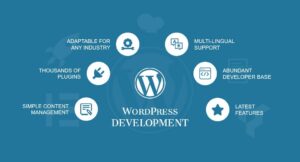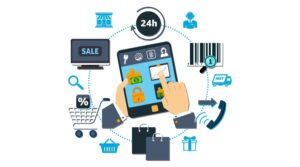
In B2B marketing, leads are the lifeblood of your business. Without high-quality leads, even the most innovative products can struggle to find their audience. At Clickyowl, we understand how crucial B2B leads are for growth and success.
B2B leads are potential customers who show interest in your product or service and can become paying clients. These leads drive sales, foster relationships, and contribute to business longevity. Unlike B2C transactions, B2B sales cycles are longer and more complex, requiring a strategic approach to engage and convert prospects.
Generating qualified B2B leads builds a pipeline of opportunities, leading to long-term partnerships and consistent revenue. At Clickyowl, we help businesses attract and nurture these leads through optimized website content, targeted email campaigns, and strategic social media use.
Investing in B2B lead generation lays the foundation for a thriving, sustainable business. Let Clickyowl guide you to success.
Table of Contents
Understanding Your Target Audience
When it comes to digital marketing, understanding your target audience is everything. If you dont really know who you are trying to sell you
Defining Your Ideal Customer Profile
Understanding your ideal customer profile (ICP) is the first step in successful B2B lead generation. At Clickyowl, we believe that a well-defined ICP helps you target your marketing efforts more effectively, ensuring you attract the right leads that are most likely to convert.
What is an Ideal Customer Profile?
An ICP is a detailed description of the type of company that would benefit most from your product or service and, in turn, provide significant value to your business. This profile typically includes firmographic data such as industry, company size, revenue, and geographic location, as well as specific characteristics like technology stack, business challenges, and purchasing behavior.
Steps to Define Your Ideal Customer Profile
Analyze Your Best Customers: Start by examining your current top customers. Look for common traits and characteristics among them. What industry are they in? How large is their company? What challenges do they face that your product or service solves?
Conduct Market Research: Use industry reports, market analysis, and competitor research to gather data on potential customers. This information will help you understand the broader market landscape and identify trends that align with your business offerings.
Create Customer Personas: Develop detailed personas that represent your ideal customers. Include demographic information, job roles, goals, pain points, and decision-making processes. This will help you tailor your marketing messages to resonate with these specific individuals.
Validate and Refine: Continuously validate and refine your ICP based on feedback and data from your sales and marketing efforts. As your business evolves, so too should your understanding of your ideal customer.
By defining your ICP, you can focus your marketing and sales strategies on attracting and engaging the right leads, ultimately leading to more efficient and effective B2B lead generation. At Clickyowl, we help you create and refine your ideal customer profile to ensure your marketing efforts yield the best possible results.
Defining Your Ideal Customer Profile
Conducting thorough market research is a crucial step in generating high-quality B2B leads. At Clickyowl, we understand that effective market research provides valuable insights into your target audience, industry trends, and competitive landscape, helping you make informed decisions and tailor your marketing strategies for maximum impact.
Why Market Research Matters
Market research helps you gain a deep understanding of your potential customers, their needs, and how your product or service can meet those needs. It also allows you to identify opportunities and threats in the market, ensuring you stay ahead of the competition.
Steps to Conduct Effective Market Research
Define Your Objectives: Clearly outline what you aim to achieve with your market research. Whether it’s understanding customer needs, evaluating market demand, or analyzing competitors, having specific goals will guide your research process.
Identify Your Target Audience: Determine who you want to reach with your product or service. This involves segmenting your audience based on factors such as industry, company size, location, and purchasing behavior.
Collect Data: Use a mix of primary and secondary research methods to gather data. Primary research involves collecting new data directly from sources through surveys, interviews, and focus groups. Secondary research involves analyzing existing data from industry reports, market studies, and online resources.
Analyze Competitors: Study your competitors to understand their strengths, weaknesses, and market positioning. Identify what they are doing well and where there might be gaps or opportunities for your business to stand out.
Understand Industry Trends: Stay updated on industry trends and market conditions that could impact your business. This includes technological advancements, regulatory changes, and economic factors.
Interpret and Apply Findings: Analyze the collected data to identify patterns and insights. Use these findings to inform your marketing strategies, product development, and sales tactics.
Conducting comprehensive market research helps you create a more focused and effective lead generation strategy. At Clickyowl, we assist you in gathering and analyzing the necessary data to ensure your marketing efforts are targeted, relevant, and impactful. Let us help you harness the power of market research to drive your B2B lead generation success.
Defining Your Ideal Customer Profile
Segmenting your audience is a vital step in B2B lead generation. At Clickyowl, we know that tailoring your marketing efforts to specific segments can significantly enhance engagement and conversion rates. By understanding the unique needs and characteristics of different audience segments, you can deliver more personalized and effective marketing messages.
Why Audience Segmentation Matters
Segmentation allows you to divide your broad audience into smaller, more manageable groups based on shared characteristics. This targeted approach ensures that your marketing messages are relevant and compelling, leading to higher response rates and more qualified leads.
Steps to Segment Your Audience
Identify Segmentation Criteria: Choose the criteria that best define your audience. Common B2B segmentation criteria include:
- Industry: Group companies by their industry sector.
- Company Size: Segment by the number of employees or annual revenue.
- Geographic Location: Divide your audience based on their physical location.
- Behavioral Data: Use purchase history, website interactions, and engagement levels.
- Technographics: Segment by the technology and software they use.
Collect and Analyze Data: Gather data from various sources such as CRM systems, website analytics, social media insights, and customer feedback. Analyze this data to identify patterns and group similar entities together.
Create Detailed Personas: Develop detailed profiles for each segment. These personas should include demographic information, business challenges, goals, and decision-making processes. Understanding these details helps tailor your messaging and solutions to meet their specific needs.
Tailor Your Marketing Strategies: Customize your marketing campaigns for each segment. This includes personalized email content, targeted ads, and relevant website experiences. Address the specific pain points and objectives of each segment to make your communications more impactful.
Monitor and Adjust: Continuously monitor the performance of your segmented campaigns. Use metrics like engagement rates, conversion rates, and lead quality to assess effectiveness. Adjust your strategies based on these insights to improve results over time.
Benefits of Audience Segmentation
- Increased Relevance: Personalized messages resonate more with your audience, leading to higher engagement.
- Better Resource Allocation: Focus your marketing efforts and resources on the segments most likely to convert.
- Improved Customer Relationships: Tailored communications help build stronger, more meaningful relationships with your prospects.
At Clickyowl, we help you segment your audience effectively, ensuring that your marketing efforts are targeted and efficient. By understanding and addressing the unique needs of each segment, you can drive more qualified leads and achieve greater success in your B2B lead generation efforts.



